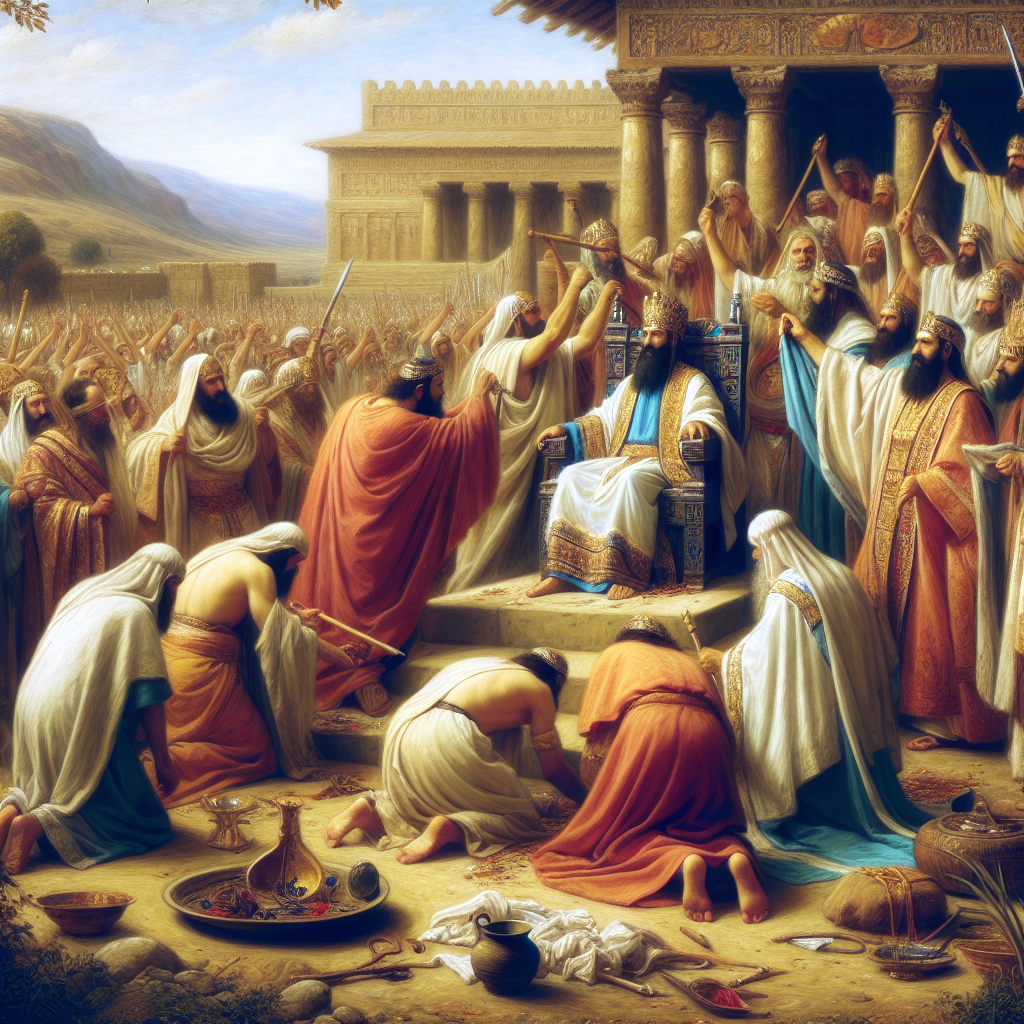Hezekiah's Restoration of Temple Worship: A Biblical Model for Spiritual Renewal in 2 Chronicles 29-31

2 Chronicles 29-31 is a significant passage in the Old Testament that highlights the reign of King Hezekiah and his efforts to restore the worship of God in Judah. Here is a detailed analysis of the passage:
Key Verses
- 2 Chronicles 29:3-5 (NIV): "In the first month of the first year of his reign, he opened the doors of the temple of the Lord and repaired them. He brought in the priests and the Levites, assembled them in the square on the east side and said: 'Listen to me, Levites! Consecrate yourselves now and consecrate the temple of the Lord, the God of your ancestors. Remove all defilement from the sanctuary.'"
- 2 Chronicles 29:31 (NIV): "Then Hezekiah said, 'You have now dedicated yourselves to the Lord. Come and bring sacrifices and thank offerings to the temple of the Lord.' So the assembly brought sacrifices and thank offerings, and all whose hearts were willing brought burnt offerings."
Themes
- Restoration of Worship: King Hezekiah's efforts to restore the proper worship of God in Judah are central to this passage. This includes cleansing the temple, consecrating the priests and Levites, and resuming sacrificial offerings.
- Repentance and Renewal: Hezekiah's actions reflect a desire for repentance and renewal, acknowledging past sins and seeking to make a covenant with God to avert His wrath.
- Leadership and Obedience: The passage underscores Hezekiah's leadership and the obedience of the people, priests, and Levites in following his instructions to restore worship.
Historical Context
- Time Period: The events occurred during King Hezekiah's reign, approximately 715 to 686 BCE.
- Political Climate: Judah was under threat from Assyrian invasion, and Hezekiah's religious reforms were likely motivated by a desire to gain God's favor and protection.
- Significant Events: The passage details the temple's cleansing, the priests' and Levites' consecration, and the celebration of Passover, which had been neglected for years.
Cultural Context
- Jewish Customs: The passage highlights the importance of consecrating priests and Levites, a crucial aspect of Jewish worship and ritual practices.
- Social Structures: The roles of the king, priests, Levites, and the assembly of Judah in restoring worship illustrate the social hierarchy and division of responsibilities in ancient Jewish society.
Etymology
- Consecrate (Hebrew: קדשׁ - qadash): This verb emphasizes setting something or someone apart for sacred use, highlighting purification and dedication in Jewish worship practices.
- Thank Offerings (Hebrew: תודה - todah): These offerings were a type of peace offering, symbolizing gratitude and thanksgiving to God.
Put it into Practice
- Personal Reflection and Repentance: Hezekiah's example encourages personal reflection on one's spiritual state and the need for repentance and renewal. This involves acknowledging past mistakes, seeking forgiveness, and committing to follow God more closely.
- Restoring Right Worship: The passage emphasizes the importance of proper worship and the need to restore it when neglected. This can be applied by ensuring personal worship practices are grounded in biblical principles and actively participating in corporate worship.
- Leadership and Obedience: Hezekiah's leadership and the people's obedience serve as examples of the importance of spiritual leadership and following God's commands in daily life.
Questions
- How can you apply the principles of restoration and renewal in your own spiritual life?
- What are some ways you can demonstrate gratitude and thanksgiving to God in your daily life?
- How can you ensure that your personal worship practices are grounded in biblical principles and reflect a true commitment to following God?